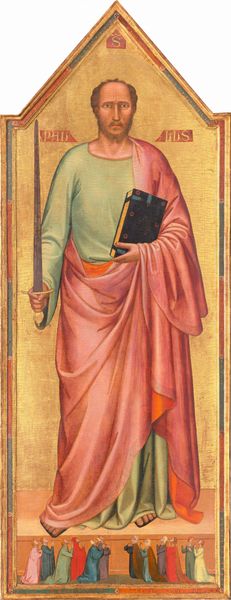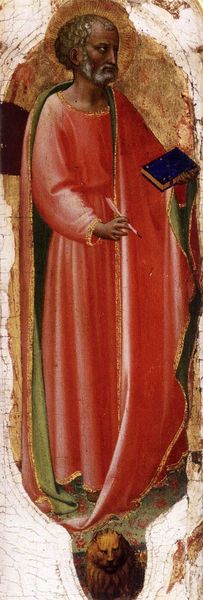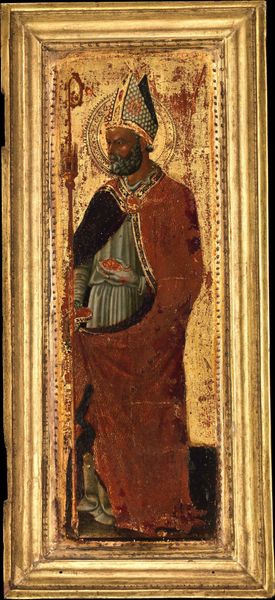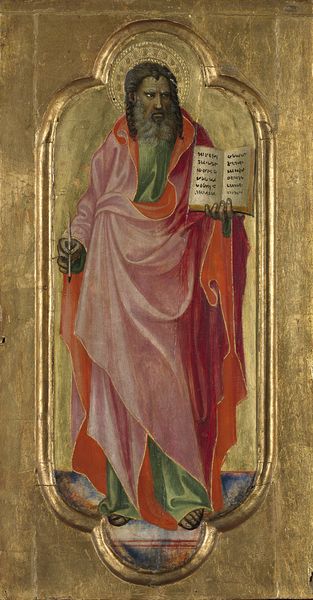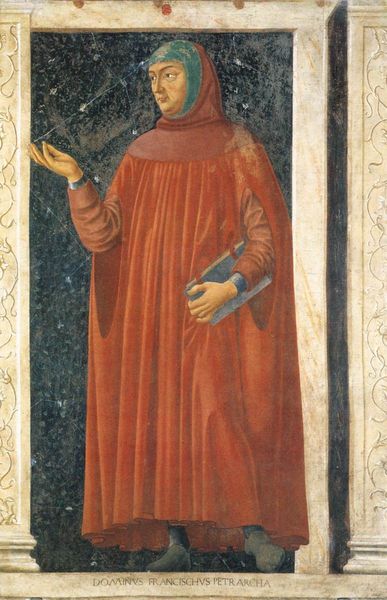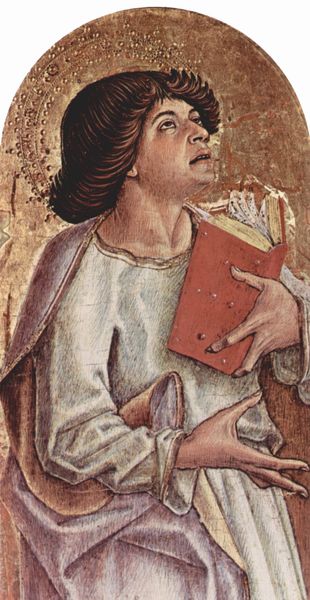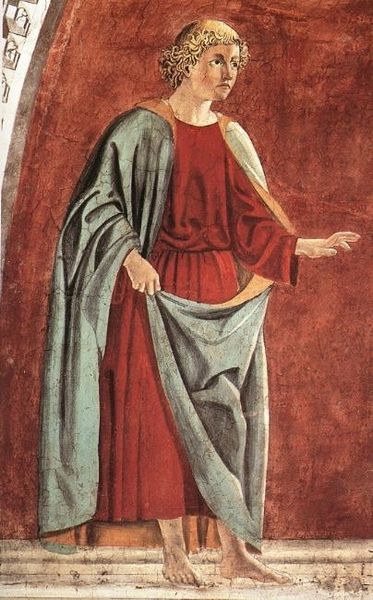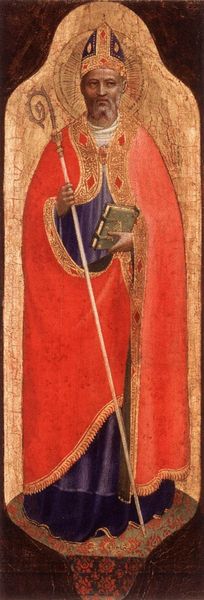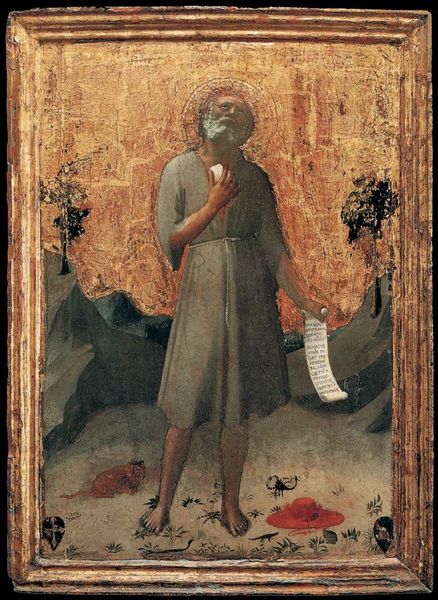
#
abstract painting
#
prophet
#
sculpture
#
sienese-school
#
possibly oil pastel
#
handmade artwork painting
#
oil painting
#
fluid art
#
acrylic on canvas
#
underpainting
#
christianity
#
human
#
painting painterly
#
watercolor
#
christ
Copyright: Public domain
Curator: Welcome. Before us, we have "Prophets. Isaiah," a tempera on wood panel crafted around 1311 by Duccio di Buoninsegna. Editor: The figure exudes such a somber gravity. It's the penetrating gaze, the weight of the scroll in his hand, and that gold ground shimmering with an otherworldly light. It’s visually arresting. Curator: Absolutely. It was initially part of the Maestà, Duccio's ambitious altarpiece for the Siena Cathedral. Placed high, this and other panels featuring prophets connected earthly events with divine vision. We see Isaiah presenting his prophecy. Editor: Looking at Isaiah, his skin seems translucent, while the drapery around his body reminds me of raw silk. His presence feels almost ethereal, connecting him to both the physical world and spiritual plane. How were depictions of prophets used in that time period? Curator: During Duccio's time, religious art aimed to make theological concepts accessible and relevant. Representing Isaiah, who foretold the coming of Christ, aimed to affirm the Church’s narrative. His wisdom, recorded on the scroll, offered a connection to God’s unfolding plan for the faithful. The materiality mattered greatly in that message as well. Editor: How interesting! But given the time, with the Plague and growing social unrest, were there those who would question the messages in these depictions? Would this depiction of faith give a voice to people or rather reinforce structures that caused injustice? Curator: It is vital to remember the social stratification of the era. While works like these provided hope and order, the church and its prominent benefactors were invested in the messages they provided. In that respect, what meanings these images made were heavily dictated by socioeconomic circumstances. Editor: Yes. It is often the job of historians to reframe perspectives that did not have representation then. Thinking about this image reminds me of voices we ought to uplift now. Curator: Agreed. Duccio’s piece reveals the complicated intersections of faith, power, and representation. Editor: It also allows for a rich and reflective moment.
Comments
No comments
Be the first to comment and join the conversation on the ultimate creative platform.


